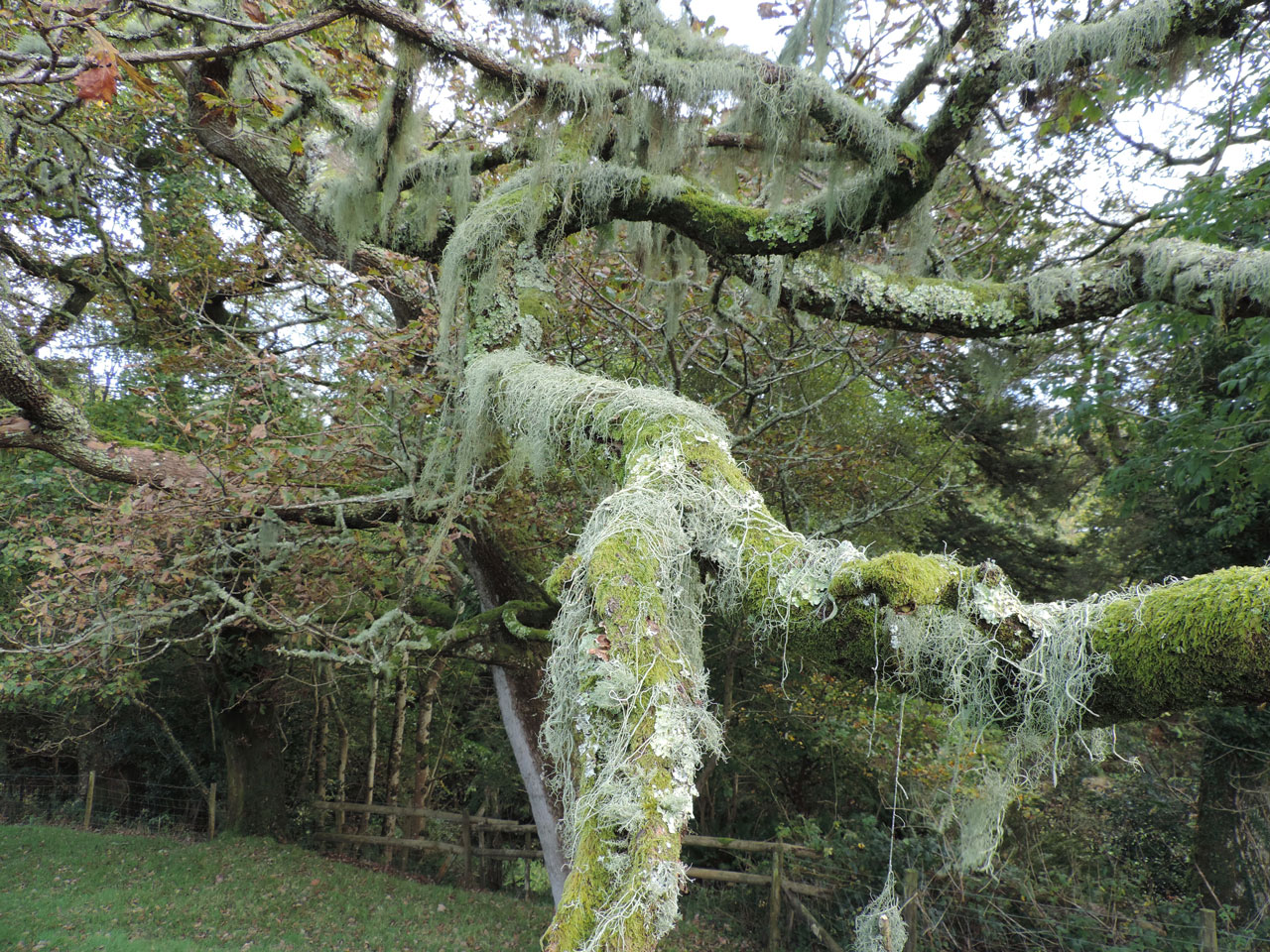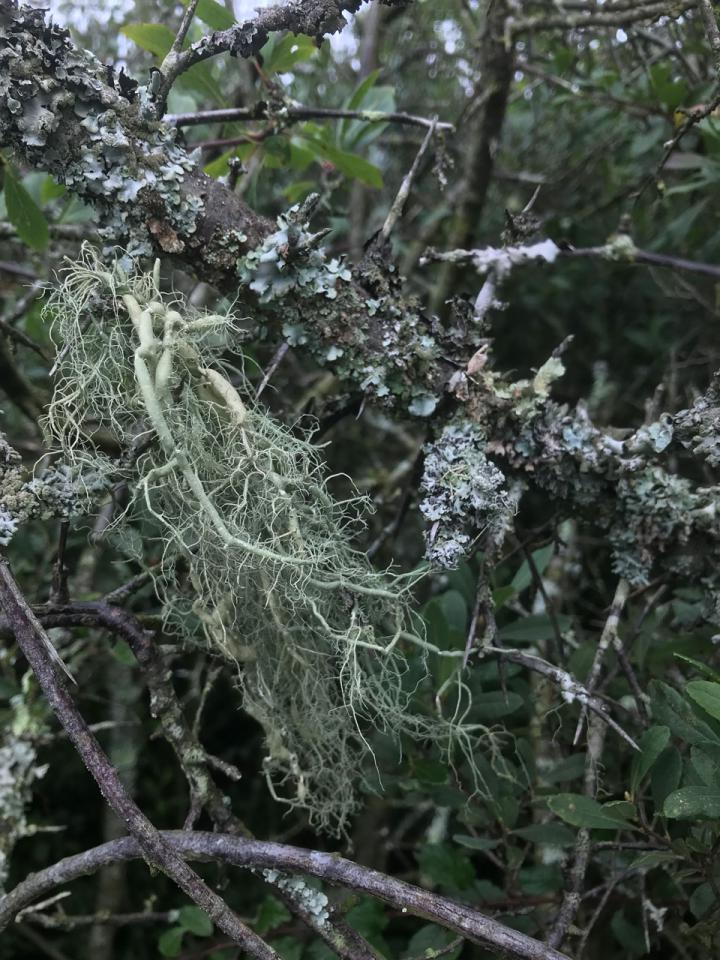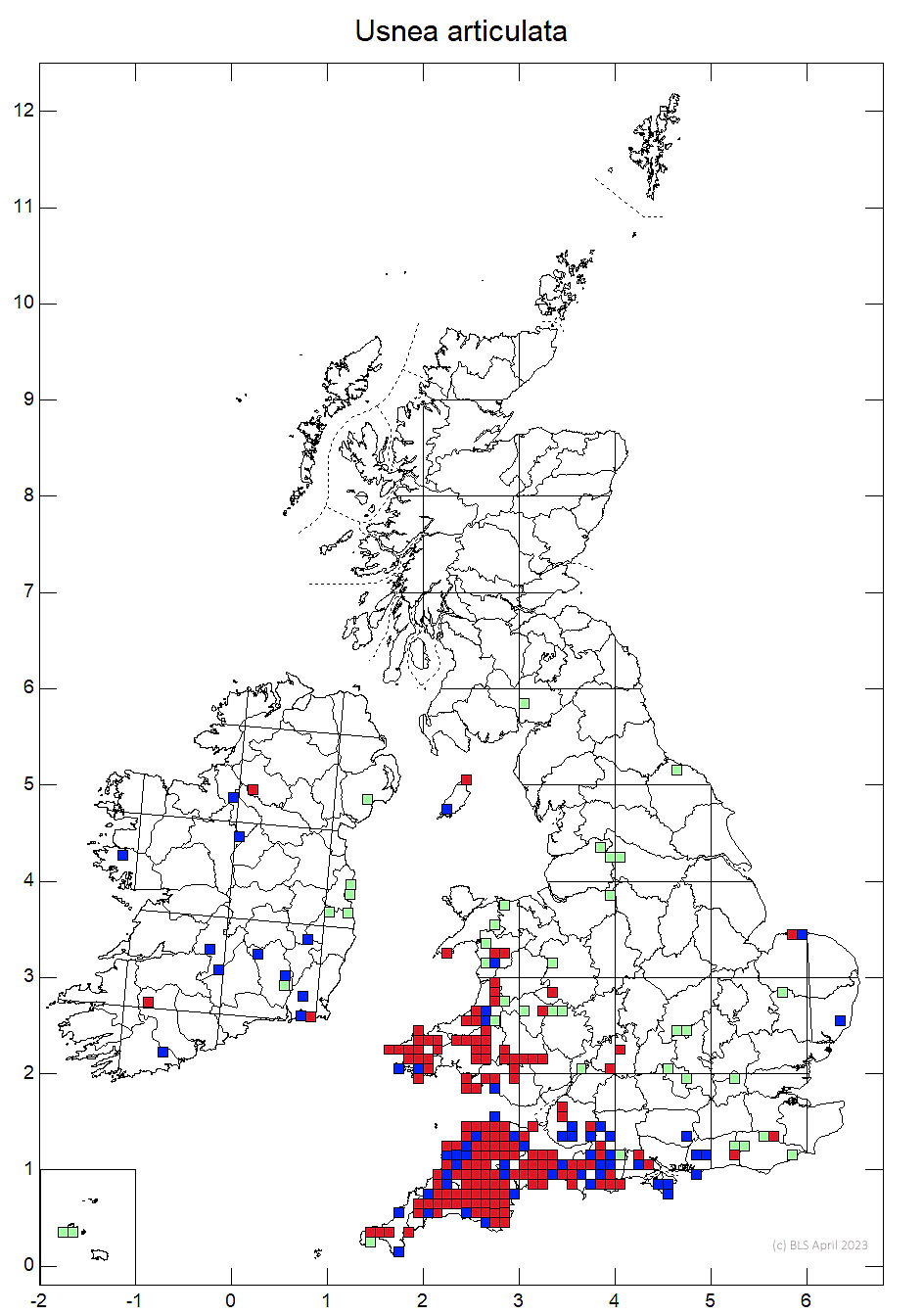Usnea articulata
Thallus grey-green, often without a distinct attachment, draped over the substratum, up to 1m in length. Main branches 3 mm or more in diameter, generally smooth but may have delicate short branchlets and scattered comma-like breaks in the outer surface. The branches can be sharply constricted down to the central core to give the appearance of an uneven ‘string of sausages’. The cortex is very thin, the medulla wide, lax and cottony. Not fertile in the UK.
Chemistry: Medulla K-, KC-, Pd+ red.
Similar species: No other Usnea species have the characteristic ‘string of sausages’. Young thalli resemble Usnea flammea which is K+ yellow changing to red.
See also Fungi of Great Britain and Ireland
Usnea articulata festoons well-lit hedges, tree canopies and more rarely dunes (Norfolk) and rocks

Locally common in the extreme south and west.
This species was very sensitive to sulphur dioxide pollution and declined in the 19th and 20th centuries. It is a bit less sensitive to ammonia than Usnea florida, and unlike this species, is showing signs of recovery subsequent to declines in sulphur dioxide pollution, especially in south Wales.
Britain: Near Threatened & an International Responsibility species
England: Section 41 species
Wales: Vulnerable, Section 7 species


